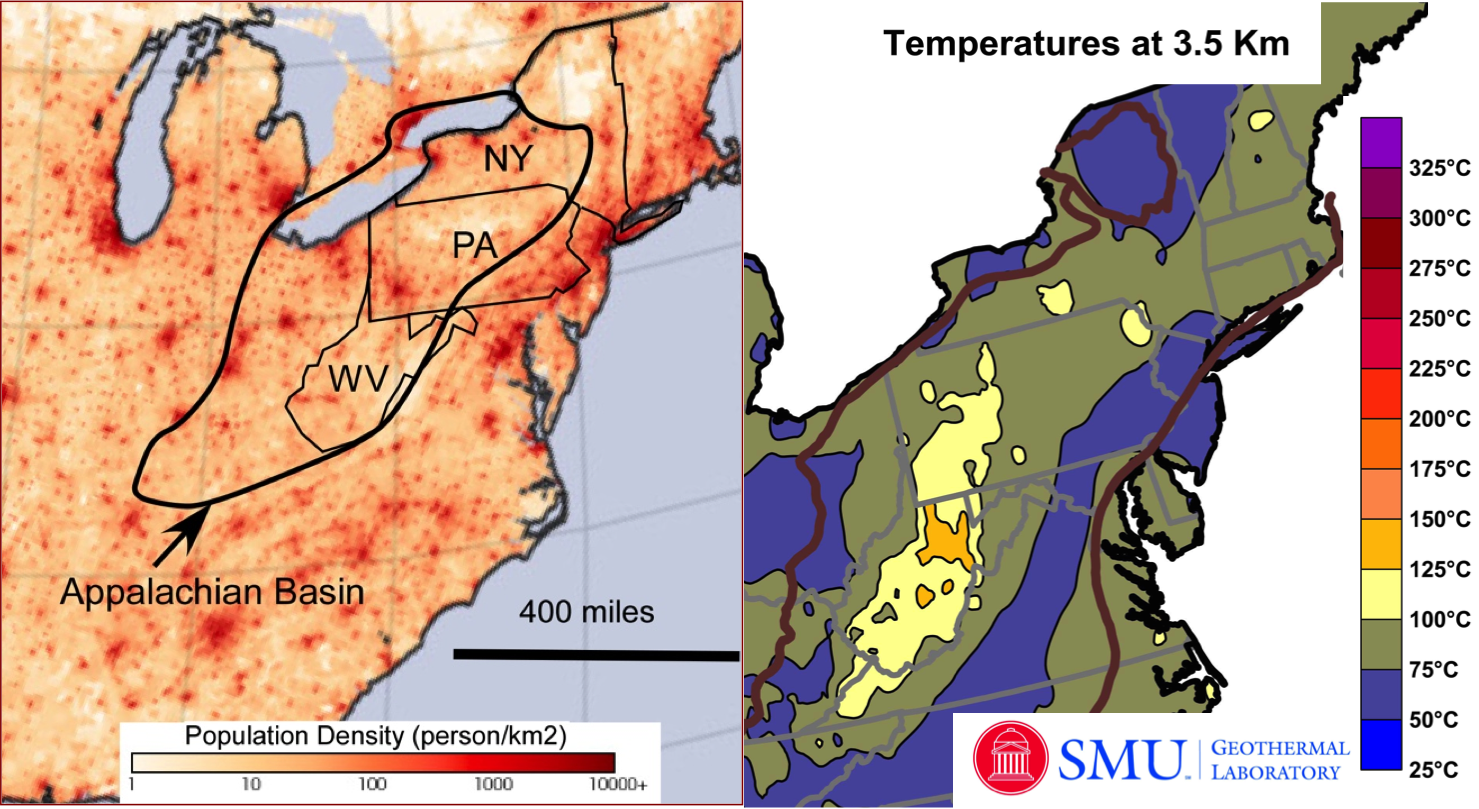Geothermal Energy from Sedimentary Basins and Depleted Oil and Gas Reservoirs
Researcher: Erin Camp
Principal Investigator: Professor Jefferson Tester
Low-temperature geothermal systems have the potential to fill a large niche in the thermal energy load of the United States. The use of specific structural and stratigraphic horizons within sedimentary basins, such as depleted oil and gas reservoirs, may be one option for fulfilling those low enthalpy needs; however, a robust understanding of the reservoir characteristics is a critical first step before implementation can be possible. Such characteristics of interest include temperature at depth, porosity and permeability, local stress state, structural setting, and fracture and fault distribution.
My research focuses on the Trenton-Black River hydrothermal dolomites in southern New York, which might be adequate geothermal reservoir rocks. These fields have been producing high volumes of gas since 2000 and are associated with long, linear fracture-dominated grabens and vuggy porosity filled with saddle dolomite. The Quackenbush Hill Field, which has produced the largest volume of gas in the region, is of particular interest as this time, as it may be able to act as a reservoir for a district heating network for the town of Elmira, NY.

Figure 1: Producing Trenton-Black River fields in southern New York.

Figure 2: (a) Population density in the northeast U.S. relative to the extent of the Appalachian Basin (figure adapted from Robert Simmon, NASA, 2006). (b) Temperature at 3.5 km depth along the Appalachian Basin (figure adapted with permission from Southern Methodist University, 2013).
